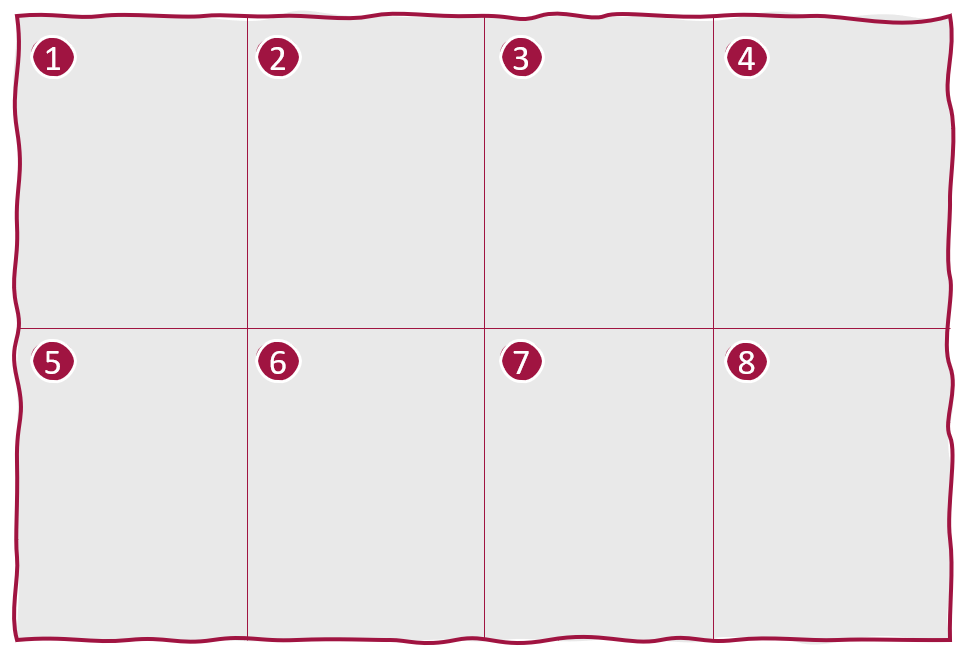# Ideate
# Crazy 8
- Purpose
- Quick and quantitative idea generation
- Time required
- 10 to 30 minutes
- Participants
- Design Thinking team
- Level of experience
- Beginner

# What is it about?
A simple sketching exercise on a sheet of paper that has previously been divided into eight squares. Each participant then has one minute per field to sketch an idea.
# The goal
A versatile generation of ideas in a very short time by deliberately putting the participants under time pressure.
# How to do it?
- Present the question.
- Divide the piece of paper into eight fields.
- The participants have one minute per field to sketch an idea. Important: Each idea should be completely new compared to the previous one. A variation is that from the fourth field onwards, ideas may build on the previous ones or be newly combined.
- Optional: All participants present their best idea. Afterwards, a concrete idea can be decided on, which is then concretized and further developed by the participants.
# When do you need it?
Crazy 8 is suitable for quickly generating a variety of ideas and not focussing one-sidedly on existing (few) ideas. This method also makes sense as a warm-up exercise, as nothing can be done wrong.
# Resources
- paper & pens
# Advantages
Due to the high time pressure and the limited space for sketching, the team is encouraged to think in images and focus on the core of the idea. Above all, this working mode promotes the quantity of ideas and helps to avoid getting stuck in a single idea. In addition, the participants' mental load is greatly reduced as there is hardly any time to think.
# Disadvantages
Due to the time pressure, some people find it difficult to generate enough or high-quality ideas or it can even lead to a mental or writer's block. With this method, the focus is primarily on the quantitative generation of ideas, which can lead to a loss of quality.
# Keep in mind
In order to increase the desired stress, it is a good idea to specify the remaining seconds. Instead of sketching ideas, they can also be put on paper in text form.
# See also
| Previous methods | Alternative methods | Following methods |
# Sources
- Tobias Leisgang (2023): Crazy 8 (German) (opens new window) projektmagazin.